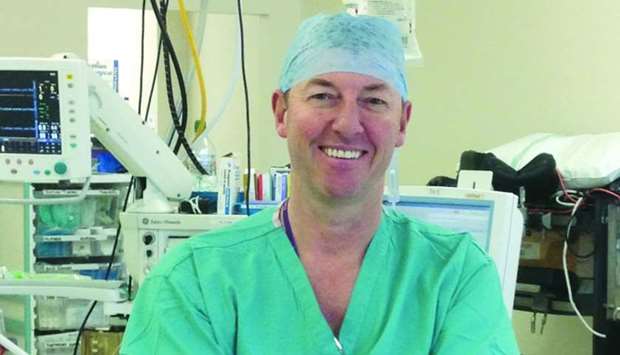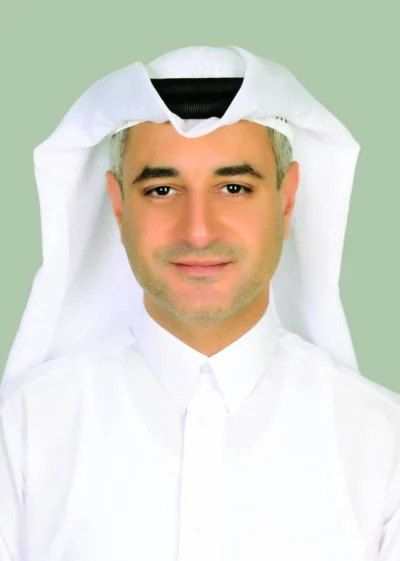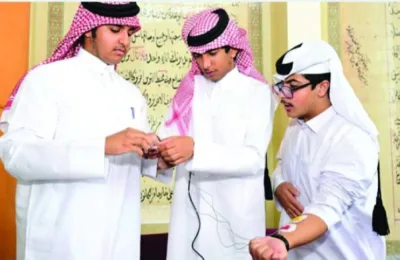With endometriosis affecting as many as one in 10 females, young women are thought to be most at risk of being undiagnosed or misdiagnosed for endometriosis, according to an official of Hamad Medical Corporation (HMC).
Dr Jonathan Herod, senior consultant - obstetrics and gynaecology at the Women’s Wellness and Research Center (WWRC), says this is due in part to a lack of awareness about the chronic condition.
Endometriosis is a progressive gynaecological condition that doctors currently consider incurable. Diagnosing endometriosis can be difficult because the symptoms vary considerably, with many other conditions having similar symptoms.
“A general lack of awareness by both women and healthcare providers, due to the normalisation of symptoms of a disease like endometriosis, could result in a significant delay from when a woman first experiences symptoms and when she eventually gets diagnosed and treated,” pointed out Dr Herod.
Each year, around 100 women are admitted to HMC's inpatient units due to endometriosis and related complications. Dr Herod notes that while endometriosis has no known cure, pain medicines, hormone therapy, and surgery can help suppress the condition and help with pain management and infertility.
The World Health Organisation estimates that around 176mn women across the world have endometriosis. Dr Herod says the chronic condition affects women during their reproductive years, typically the years between the onset of menstruation until menopause. The often painful disorder is caused by the tissue that normally lines the inside of the uterus — the endometrium — growing outside the uterus. The primary symptom of endometriosis is pelvic pain which is often associated with menstrual periods. Impaired fertility is among the complications caused by the disease.
As the symptoms of endometriosis are often not specific, the diagnosis cannot be made by the symptoms alone. Dr Herod says to determine whether a woman’s symptoms are linked to endometriosis, doctors will take a medical history and perform a pelvic examination. Further investigation such as an ultrasound scan and diagnostic laparoscopy procedure may also be recommended. This is a minor day case operation where a fibre optic telescope is used to visualise the inside of the abdomen and pelvis.
During March, HMC joined the international community in recognising Endometriosis Awareness Month to highlight the condition and educate women of reproductive age about its symptoms and treatment. Dr Herod said it’s important to raise awareness about the complex condition because while it often entails severe adverse symptoms, delays in obtaining a diagnosis are common.
“Public awareness and education of endometriosis is important as teenagers and young women in their early 20s are not too young to have endometriosis – in fact, most women experience symptoms during adolescence, but unfortunately don’t get diagnosed and treated until they are in their 20s or 30s,” he added.
Endometriosis is a progressive gynaecological condition that doctors currently consider incurable. Diagnosing endometriosis can be difficult because the symptoms vary considerably, with many other conditions having similar symptoms.
“A general lack of awareness by both women and healthcare providers, due to the normalisation of symptoms of a disease like endometriosis, could result in a significant delay from when a woman first experiences symptoms and when she eventually gets diagnosed and treated,” pointed out Dr Herod.
Each year, around 100 women are admitted to HMC's inpatient units due to endometriosis and related complications. Dr Herod notes that while endometriosis has no known cure, pain medicines, hormone therapy, and surgery can help suppress the condition and help with pain management and infertility.
The World Health Organisation estimates that around 176mn women across the world have endometriosis. Dr Herod says the chronic condition affects women during their reproductive years, typically the years between the onset of menstruation until menopause. The often painful disorder is caused by the tissue that normally lines the inside of the uterus — the endometrium — growing outside the uterus. The primary symptom of endometriosis is pelvic pain which is often associated with menstrual periods. Impaired fertility is among the complications caused by the disease.
As the symptoms of endometriosis are often not specific, the diagnosis cannot be made by the symptoms alone. Dr Herod says to determine whether a woman’s symptoms are linked to endometriosis, doctors will take a medical history and perform a pelvic examination. Further investigation such as an ultrasound scan and diagnostic laparoscopy procedure may also be recommended. This is a minor day case operation where a fibre optic telescope is used to visualise the inside of the abdomen and pelvis.
During March, HMC joined the international community in recognising Endometriosis Awareness Month to highlight the condition and educate women of reproductive age about its symptoms and treatment. Dr Herod said it’s important to raise awareness about the complex condition because while it often entails severe adverse symptoms, delays in obtaining a diagnosis are common.
“Public awareness and education of endometriosis is important as teenagers and young women in their early 20s are not too young to have endometriosis – in fact, most women experience symptoms during adolescence, but unfortunately don’t get diagnosed and treated until they are in their 20s or 30s,” he added.



